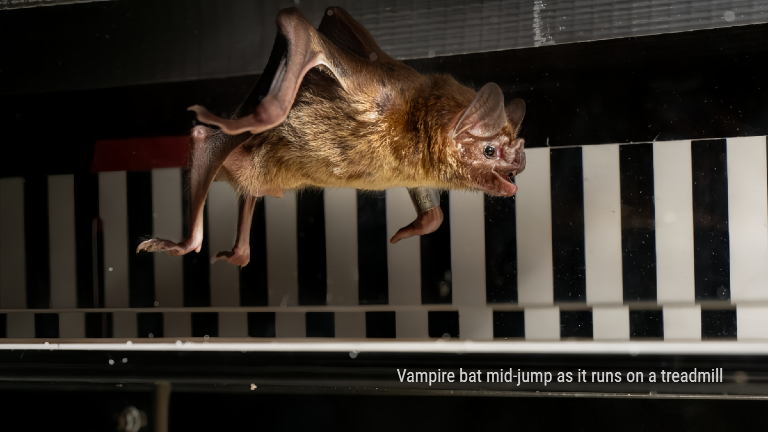Vampire bats rely on amino acids from their blood diet to fuel their exercise, scientists discovered after observing the animals on tiny treadmills.
Most mammals, including humans, rely on carbohydrates and fats from their complex diets to fuel physical activity. However, vampire bats exclusively consume blood, which is very low in carbohydrates and fats but high in protein. This raises the question of whether vampire bats instead obtain most of their energy from the protein they consume — similar to bloodsucking insects.
There are three vampire bat species: the common vampire bat (Desmodus rotundus), the hairy-legged vampire bat (Diphylla ecaudata) and the white-winged vampire bat (Diaemus youngi). All are found in warm regions of the Americas, including Mexico, South America and Trinidad, according to the San Diego Zoo. They live in colonies of 20 to 100 individuals and are the only mammals that are obligate blood feeders.

